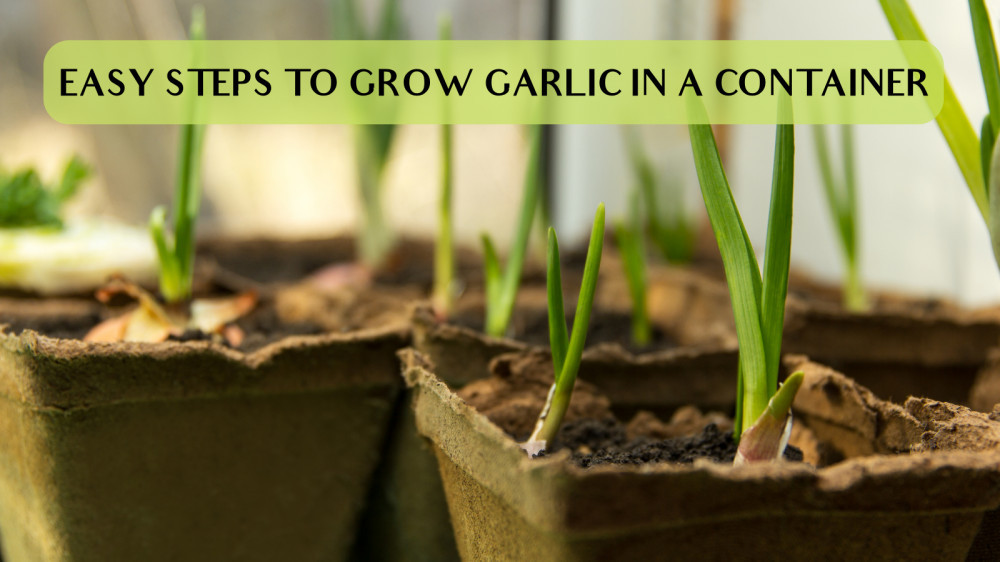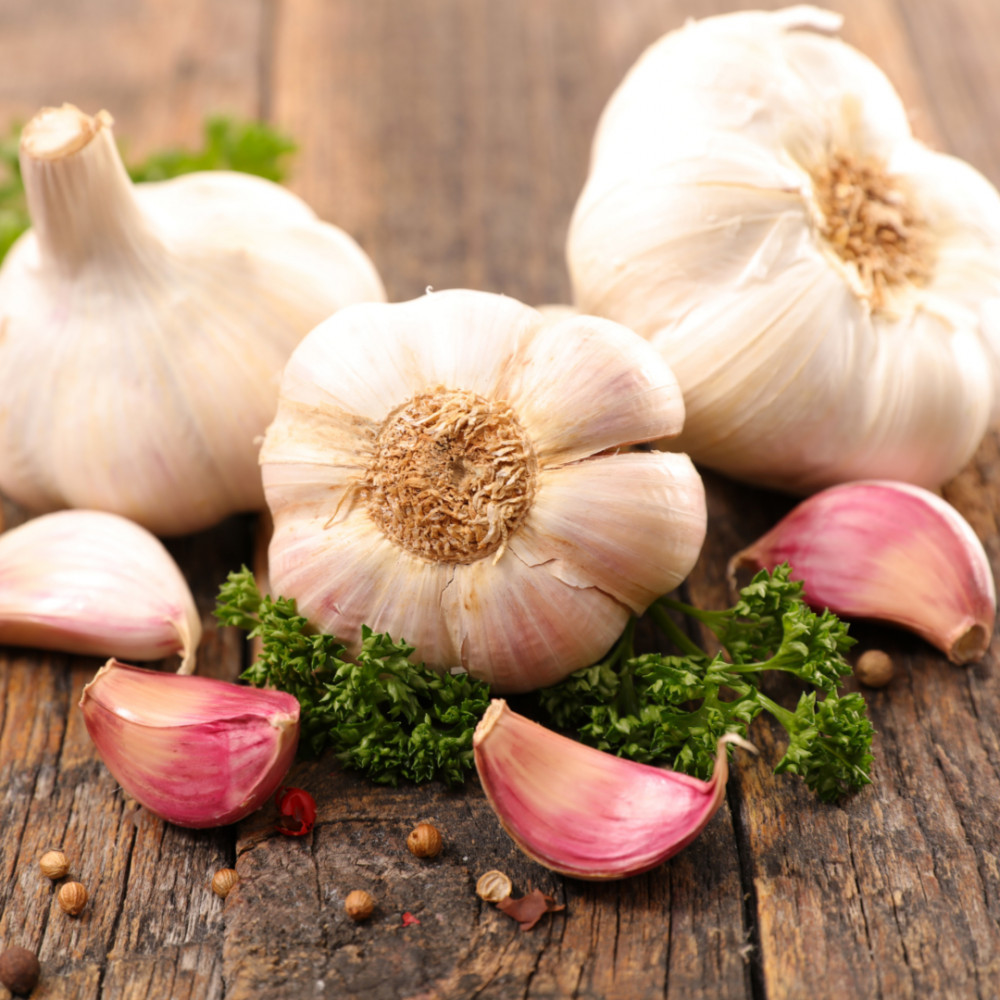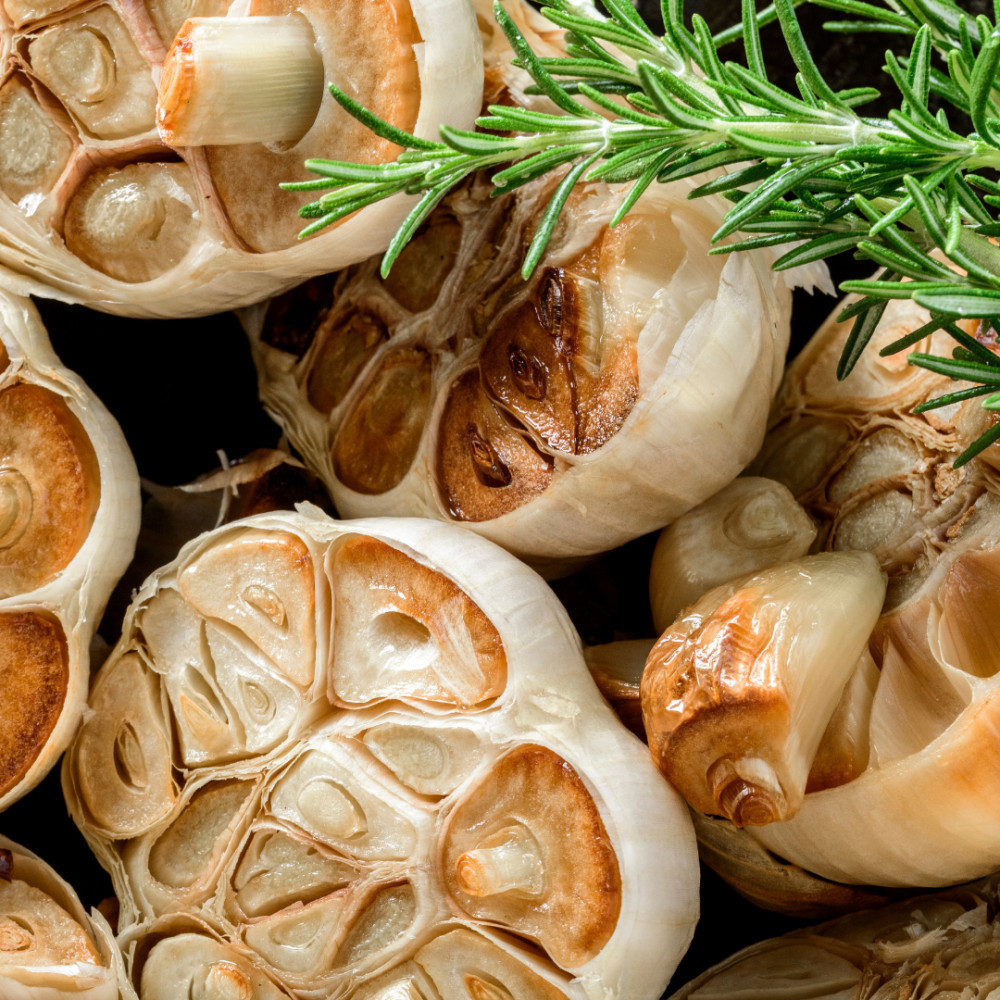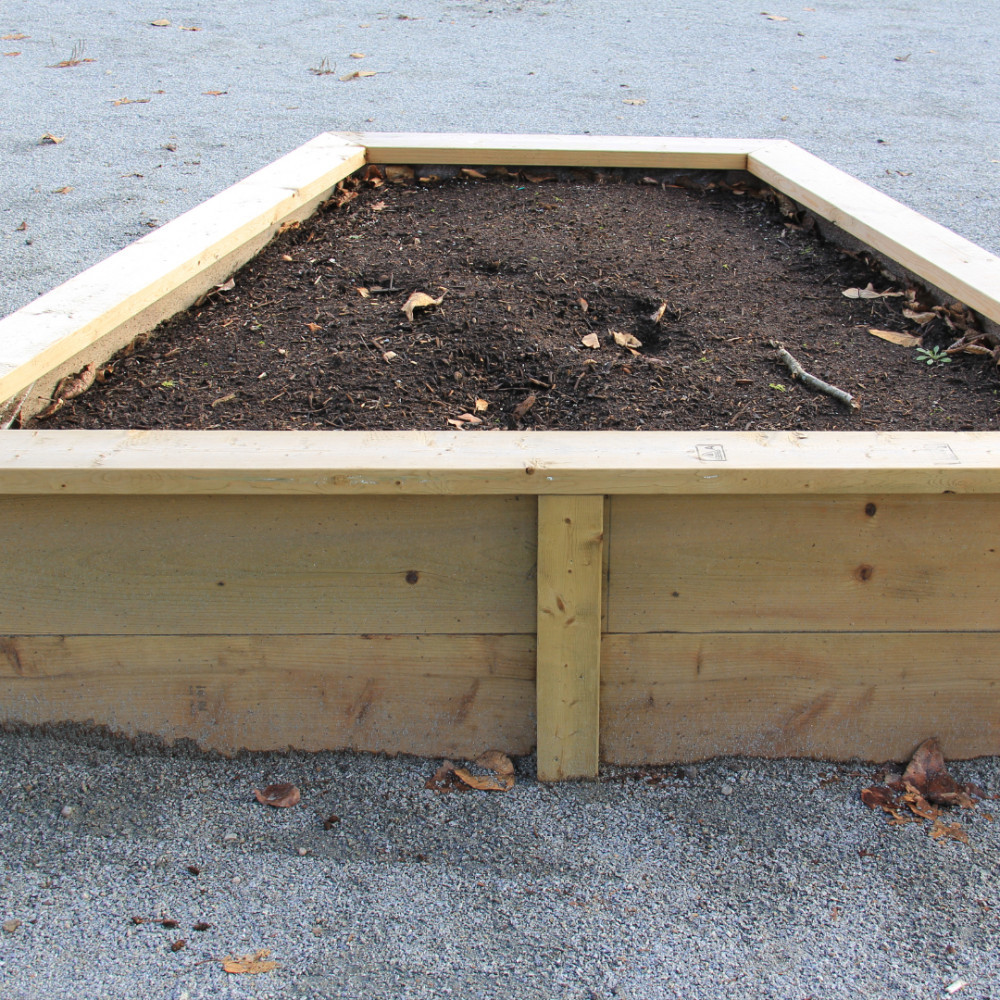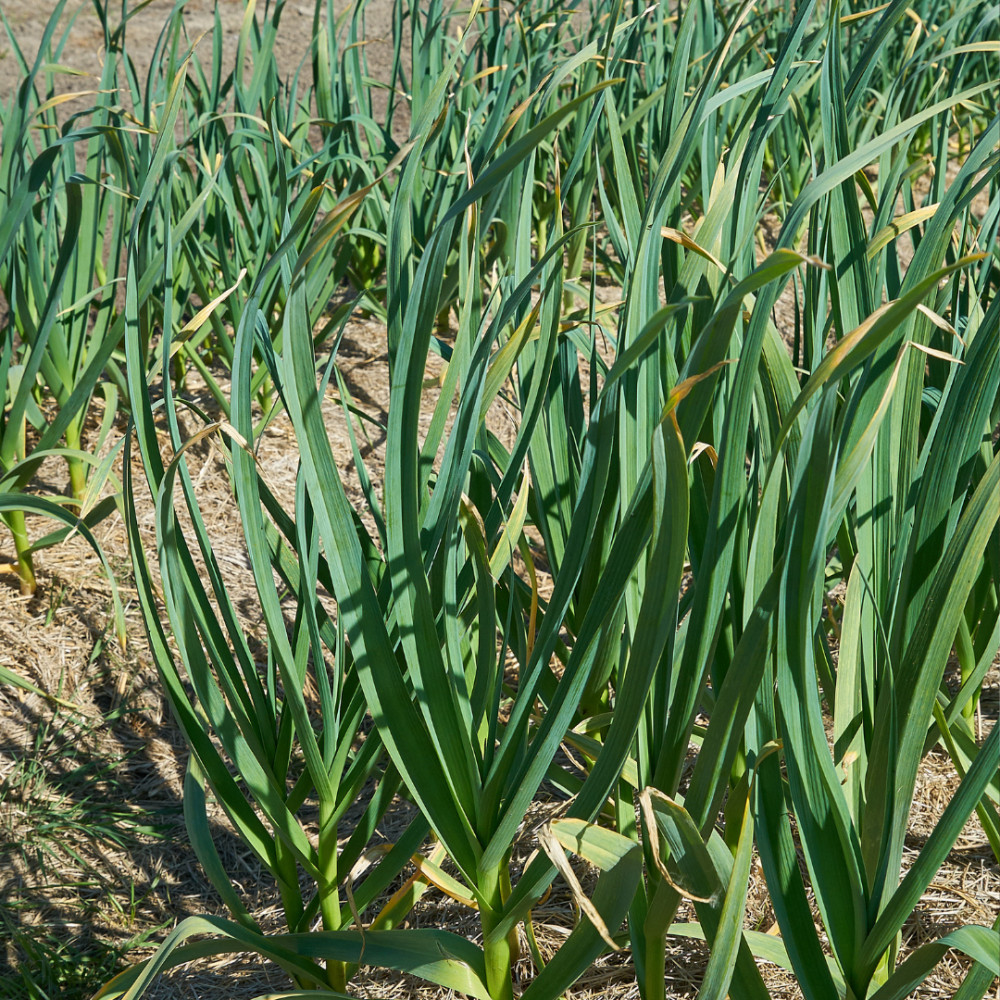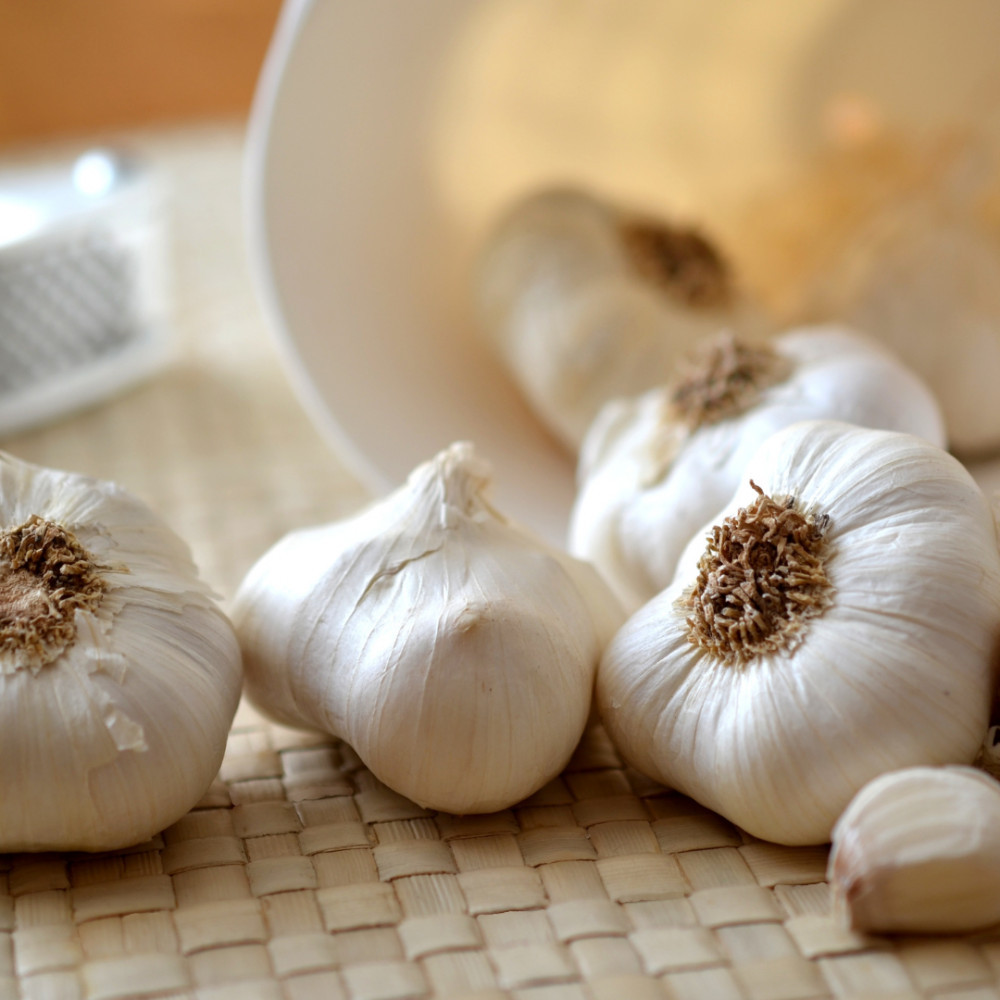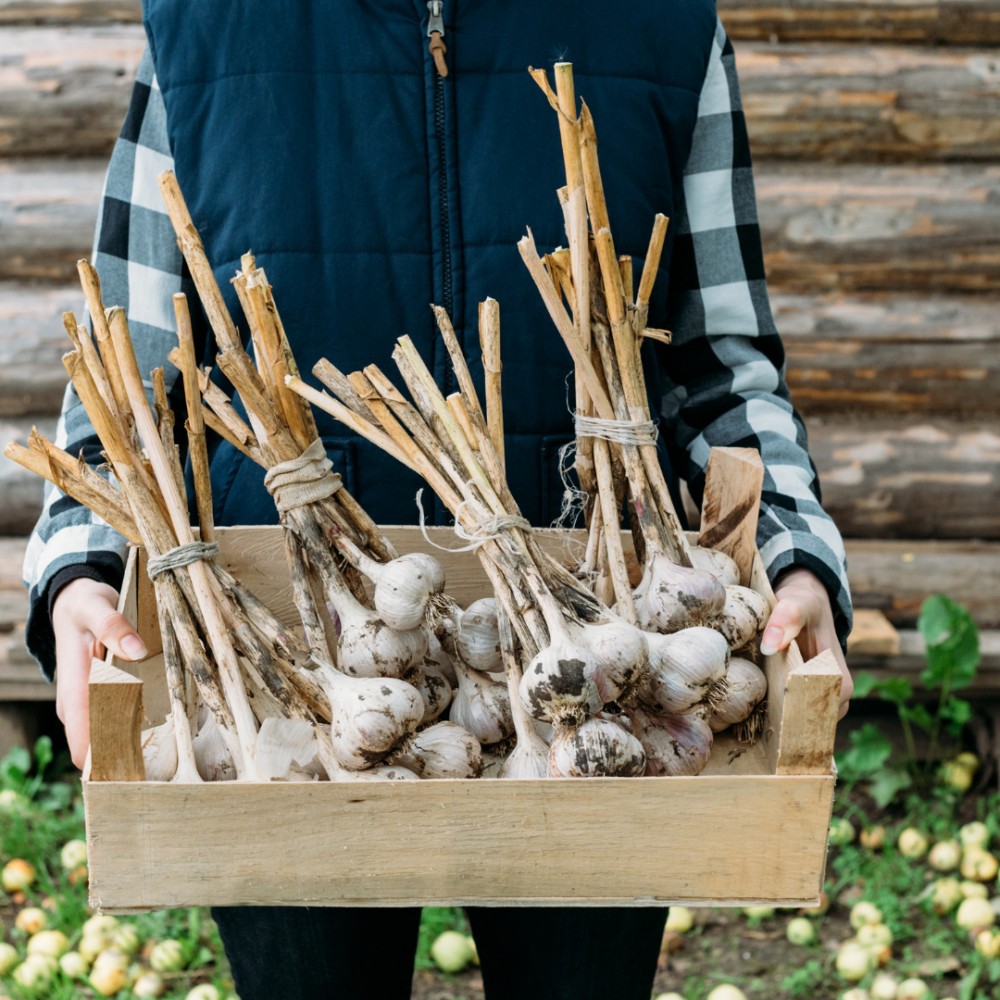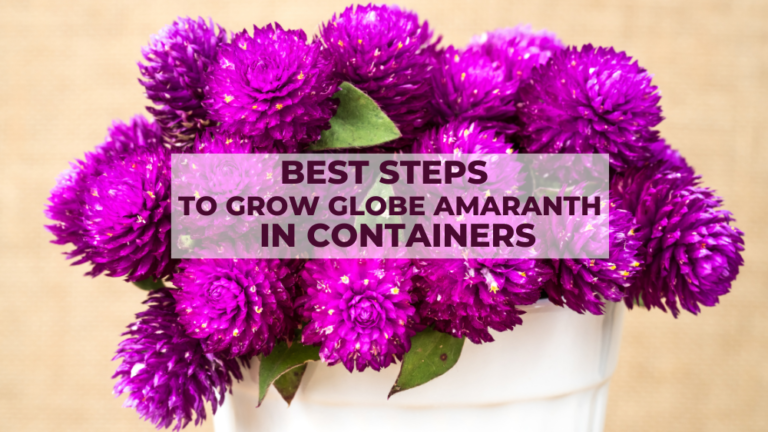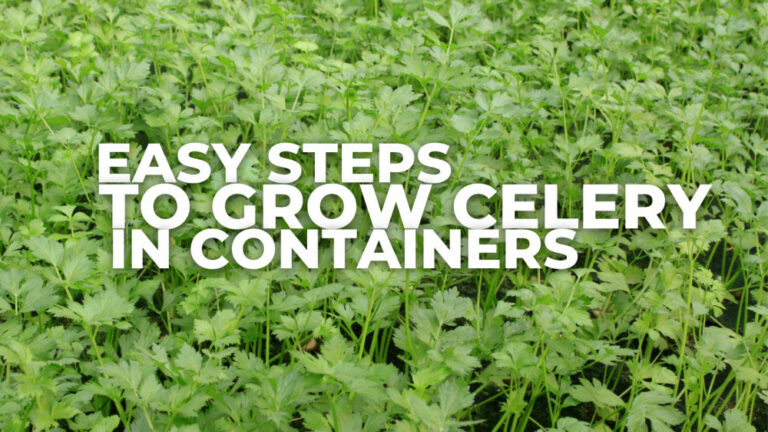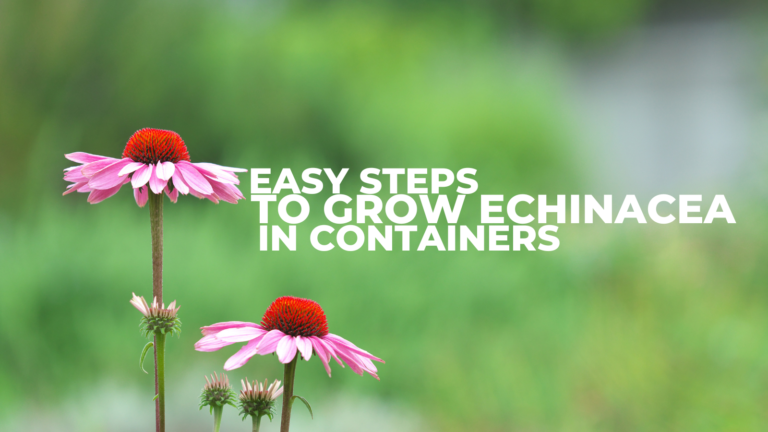Easy Steps To Grow Garlic In A Container
Easy Steps To Grow Garlic In A Container
Garlic has a long growing season and requires frequent watering, making it tricky to grow in a container. Despite this, growing uncommon types and even growing them indoors can be well worth the effort. Thanks to the taste, you'll immediately become addicted to homegrown garlic, just like you would with many freshly picked fruits, vegetables, and herbs. And to top it off, you can eat the scapes if you plant hardneck garlic. While softneck garlic likes a temperate climate, stiff-neck varieties thrive in colder areas. This article will be helpful for you to grow garlic in a container, ideally.
Origin Of Garlic
One of the earliest known horticultural crops is garlic. Garlic was mentioned in the Old World by Egyptian and Indian cultures 5000 years ago, and there is unmistakable historical proof that the Babylonians used it 4500 years ago and the Chinese 2000 years ago. According to specific literature, Garlic may have grown in China as far as 4,000 years ago.
Today, garlic grows wild only in Central Asia (mainly in Kyrgyzstan, Tajikistan, Turkmenistan, and Uzbekistan). Wild garlic probably grew over a considerably more comprehensive range in the past. Wild garlic may have been everywhere, from China to India to Egypt to Ukraine.
Since this is the geographical area where the crop originated and the only spot where it thrived in the wild, this area where garlic has grown in the wild is known as its “center of origin.” Although “wild garlic” is occasionally mentioned in other parts of the world, this is the only area where garlic regularly grows in the wild without human propagation.
Other plants that are locally referred to as “wild garlic” are always other species of the garlic genus (Allium), not actual garlic (Allium sativum). For instance, Allium vineale, a wild variety of the garlic family known as “wild garlic,” grows across North America.
Since the most extensive genetic variation can be anticipated here, the “center of origin” for a plant or animal species is sometimes referred to as its “center of diversity.” For this reason, those looking for novel genetic variations in garlic have gathered wild garlic in Central Asia.
What varieties of garlic were once grown by the first garlic growers outside of its “center of origin”? In actuality, we hardly know the early varieties of garlic developed. The earliest documents found to date mention different types of garlic, whether they be stiff neck or softneck, red or white, early or late, local or foreign.
Although evidence of what might be construed as a hardneck form was discovered buried in Egyptian tombs, some have believed that soft neck garlic was the prevalent type farmed throughout its earlier history. The difference between hardneck and softneck garlic was not generally recognized until the last 1000 years, when it was first grown in southern Europe.
We can only hypothesize about the early varieties of garlic farmed until additional historical literature describing garlic is discovered or until old, well-preserved samples are uncovered. In the 5000 years that garlic has been grown and consumed, there has rarely been a need to differentiate between types or varieties. In actuality, developing more thorough descriptions of varieties for any crop plant is a relatively recent habit that has only become commonplace in the last few hundred years.
Varieties Of Garlic
If you're unfamiliar with garlic, you could mistakenly believe that all varieties are the same as those seen in supermarkets. Our stores are not renowned for having a wide selection of vegetables. You only have one or two options for most, if not all, vegetables, such as onions, potatoes, tomatoes, and carrots.
It is reasonable that business efficiency and longevity come before variety and freshness. But with just a little effort, you can expand your horizons to a wide range of options that will be fresher, better for you, taste better, and ultimately work out to be less expensive over time.
Hardneck Garlic
As their name suggests, hardneck garlic types (Allium sativum var. ophioscorodon) are typically more resilient than softneck. For Northern gardeners, hardneck cultivars are the best option.
Compared to softneck, varietals often produce fewer cloves per bulb but are frequently slightly bigger. Because it needs a minimum of 40 days of exposure to low temperatures or more minor, stiff neck garlic thrives better in colder areas. Vernalization is the name of this procedure.
There are more than 200 different types of hardneck garlic varieties, including:
- Purple Stripe
- Marbled Purple Stripe
- Asiatic
- Glazed Purple Stripe
- Creole
- Middle Eastern
- Turban
- Rocambole
- Porcelain
The three main hardneck garlic varieties are porcelain, rocambole, and purple stripe. With 12 cloves per bulb, rocambole is tan or brownish. The name comes from the soft white colour of porcelain, which has four cloves per bulb. Purple stripes go without saying. The most resilient varieties include Purple Stripe and Rocambole. The northern United States and Canada are the most temperate regions for gardeners to use. Porcelain variants should thrive for gardeners in more temperate locations.
Unlike softneck garlic, hardneck garlic has a lower shelf life after harvest, lasting about 3 to 5 months in storage.
Softneck Garlic
If you reside in a milder environment, the Allium sativum var. sativum softneck garlic kinds are the finest to grow. They thrive in climates with milder winters because, unlike hardnecks, they don't need exposure to cold temperatures to produce bulbs. Additionally, they mature earlier than hardneck cultivars. They don't have scapes and typically have several little cloves in each bulb.
Types of softneck garlic varieties include:
- Blanco Piacenza
- California Early and Late Whites
- Corsican Red
- Inchelium Red
- Silver Rose
- Silver White
- French Red
Because of their dense heads and densely wrapped cloves, softneck varietals typically store better than hardneck varieties. The tight wrapping protects the cloves' moisture, shielding them from illness. They can remain firm and fresh for up to 9 months when properly cured and kept. Therefore, if you need long-term storage, this type is the one to pick.
Grow Garlic In A Container
Container Requirements
It's essential to keep in mind that a pot or container should be at least 6 inches deep when choosing one. It should be a little bit deeper. The planting depth for garlic should be about 2 inches.
Garlic cloves should be separated by around 3–4 inches in your container. (Slightly farther apart if the variety has giant bulbs.) Usually, you may fit up to 16 cloves in a planter or container with a surface area of 1 square foot. The colour of your pots or containers is another thing to consider.
Containers that are black or have dark colours will absorb more heat. At the same time, those with lighter hues keep cooler because they reflect more light. Your climate will significantly impact which choice is best for your requirements. Determine the location and timing of your garlic cultivation.
Time To Plant Garlic
Garlic should generally be planted in pots at the same time as in the ground in the fall, after the first frost, when the earth has cooled but before anything freezes. Garlic may generally be planted anytime between September and November. Harvesting might take anywhere between six and nine months after planting.
Choose your garlic bulbs from a nearby farmer's market or nursery when you're ready to plant them or order them online. If you buy garlic from the grocery store, it might grow in a container for you, but if you do, pick an organic variety because shop garlic is occasionally treated to stop sprouting.
Soil To Grow Garlic In A Container
Please be aware that there are many factors to consider while learning how to grow garlic in pots, but one of the most important – and frequently the most overlooked – is selecting the proper soil mixture for the task. Especially during the winter, if you receive a lot of precipitation, garlic needs a well-drained soil mixture to prevent the cloves from rotting.
But to support its tall plants and enlarging heads in the spring and summer, garlic also needs healthy soil that is heavy enough to support it. Because of this, I advocate combining 75:25 high-quality potting soil and compost. In other words, add 1 cup of compost for every 3 cups of potting soil. Buy compost by the bag if you don't manufacture it yourself.
Plant Garlic
Gently separate garlic cloves from the head using your hands. The paper coverings on each clove are optional.
The sharp end of the cloves should be in the soil. They should be spaced apart by at least 3 inches.
Place the cloves on the ground. A layer of approximately an inch of dirt will do if you live in a warm climate. However, add about 2 inches of soil over the cloves in colder regions.
Gently pat the soil to compact it over the garlic cloves.
Watering To Grow Garlic In A Container
These bulbs prefer moist soil, but ensure your container receives adequate sunlight and has sufficient drainage to keep the water flowing. These bulbs also prefer moist soil. Garlic can rot or pass away if left in too much water. Simply fill a container with room-temperature water, then carefully pour it into the soil to water garlic.
Sunlight To Grow Garlic In A Container
Garlic prefers bright direct sunshine when grown inside containers, and it needs at least six hours each day to thrive. It's okay if your house doesn't have a lot of open windows and perpetual sunshine. A fluorescent light or a grow light can be beneficial and, occasionally, much more effective.
Pests And Disease Of Garlic
Since your garlic is grown in pots, you won't need to be concerned about many pests or illnesses spreading from the soil or nearby plants.
Additionally, this plant's strong aroma already does a respectable job of keeping away hungry animals. If you believe your garlic is under assault, use this method to find the pest and lessen the harm.
Downy mildew can occasionally become an issue when plants are grown too close together or in sticky situations. White blotches appear on the leaves as a result.
Watch out for basal rot, which manifests first as yellowing at the plant's base and then as browning and withering of the leaves.
If your plant reaches this point, you can only remove the affected bulb and as much of the surrounding soil as possible to prevent the infection from spreading.
Infected plants should be removed from containers along with any dirt, and the pot should be cleaned and sanitized. Retry by filling the pot with fresh dirt.
Keep an eye out for basal rot, which first shows yellowing at the plant's base before turning brown and withering the leaves.
The only way to stop the illness from spreading if your plant reaches this stage is to remove the afflicted bulb and as much surrounding soil as possible.
Infected plants and dirt should be taken out of containers, and the pot should be cleaned and sterilized. Try again by adding new dirt to the pot.
Curing Garlic
If you want to utilize them immediately, just brush off the dirt and peel your fresh crop to reveal the ripe cloves. Fresh garlic typically has a softer, more delicate flavour than cured bulbs.
You must cure or thoroughly dry out your container-grown garlic before storing it. Wait to wash your produce to accomplish this. Before storing the plant, there is no need to wash any dirt from it with water.
The goal of curing is to get every last drop of moisture out of the leaves and stalk and into the actual cloves. Picking on a dry day is advised, but lightly brushing some of the dirt away with your hands or a dry rag is acceptable. However, hold off on washing your garlic until right before you're ready to use it.
Because of this, the cloves may be stored for a longer time and are protected from fungi, mildew, and viruses as they wait patiently for you to enjoy them.
Hang the plants to cure in a dry, shaded area, such as a covered patio or a well-ventilated interior space.
The tips and roots should be completely brown and dry after two to four weeks. At this point, you can trim the stems and roots and peel back the outer layer to reveal a lovely, spotless head inside.
Harvesting Garlic
It can be challenging to predict when to harvest garlic, so there are a few things you should do in the weeks before.
Consider growing garlic in a container garden if you have limited space. It is adaptable in the kitchen and the garden. And is a fantastic option for maximizing your space all year long. Wherever you dwell, you should be able to grow garlic in pots if you make the proper decisions and carefully weigh your possibilities effectively.
Mulching
Mulch should be applied to your garlic plants to a depth of one inch. In particular, during the fall and winter months, it aids in keeping moisture sealed into the soil. If you'd like, you can take it out in the spring.
Using lighter-coloured mulch in the spring, such as straw, is a good idea to keep your plants cooler when summer approaches.
Should You Regularly Take Supplements Containing Garlic?
Before using any supplement, especially a daily dose, it is best to speak with your doctor. That warning is especially relevant for supplements containing garlic.
Garlic supplements can result in side effects, including headaches, fatigue, loss of appetite, muscle aches, vertigo, and allergic reactions like asthma attacks or skin rashes.
Garlic supplements can intensify blood thinners' effects, making it even more difficult for your blood to clot.
Is Eating Garlic Cooked Or Raw Better?
It can be challenging to benefit from the advantages of garlic fully. For instance, the research demonstrating the advantages of raw and cooked garlic—rather than supplements—increased immunity. The pH balance of garlic can be altered by cooking it or using it in a recipe. After you mince, crush, or chop it, let it sit for a few minutes to allow the enzymes from the allicin to begin to act.
Raw garlic will be most beneficial, according to Jeffers. However, if you decide to cook it, keep the temperature below 140 degrees Fahrenheit (60 degrees Celsius). Garlic should only be added to dishes when the cooking is almost complete because higher temperatures destroy the allicin.
Sources To Buy Garlic Cloves For Planting
It is not recommended to plant garlic cloves from the grocery store merely. A growth inhibitor may have been applied to these cloves to avoid sprouting.
Instead, purchase some cloves online, at a local plant nursery, or from a garden centre.
Conclusion
One of the most practical and adaptable ingredients is garlic. In addition to being a solid flavour enhancer, it is pretty suitable for your health. Feel free to comment here if you may face any problems growing garlic in a container.
I trust you enjoyed this article on the Easy Steps To Grow Garlic In A Container. Please stay tuned for more blog posts to come shortly. Take care!
JeannetteZ
>>>Please click here to read my all-inclusive article about Container Gardening<<<
>>>Are you interested in homegrown herbs and medicine? Please click here to find out more about it!<<<
Your Opinion Is Important To Me
Thoughts? Ideas? Questions? I would love to hear from you. Please leave me your questions, experience, and remarks about this article on the Easy Steps To Grow Garlic In A Container, in the comments section below. You can also reach me by email at Jeannette@Close-To-Nature.org.
Disclosure
This post may contain affiliate links. As an Amazon Associate and other affiliate programs, I earn from qualifying purchases at no extra cost to you. Read my full affiliate disclosure.
You might also enjoy these blog posts:
Easy Steps To Grow Lemongrass In A Container
Simple Steps To Grow Artichokes In A Container
Easy Steps To Grow Swiss Cheese Plants In A Container
Steps To Grow Fiddle Leaf Figs In A Container
Easy Steps To Grow Lavender In A Container

